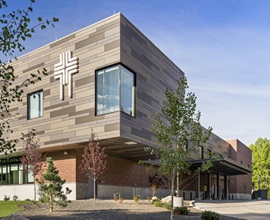Dr. Pate’s Prescription for Change
St. Luke’s is working to lower cesarean rates for mother-and-baby safety

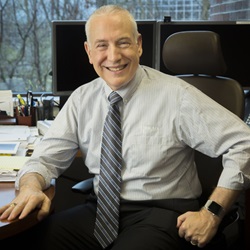
It is widely believed that too many women in the U.S. are getting C-sections. C-sections are not without risk, and a prior C-section often means C-sections for subsequent pregnancies. St. Luke’s McCall is trying to buck these trends and having considerable success in doing so. Here is St. Luke’s Communications Coordinator Chereen Langrill to explain the impressive results St. Luke’s McCall has achieved.
- David C. Pate, M.D., J.D.
Cesarean deliveries can be life-saving for the mother and baby when they are medically necessary. On the other hand, a C-section puts women at higher risk for potentially fatal complications such as heavy bleeding, infections or blood clots.
In rural locations like McCall, it is critical that decisions regarding obstetric care are made carefully – and well in advance when possible – to minimize risk to patients. And while lower C-section rates are a priority at all St. Luke’s locations, it is especially important in rural communities, including McCall. In that community, fewer resources are available if severe complications happen, and the nearest large hospital is nearly 100 miles away.
It’s for those reasons that St. Luke’s McCall has developed a care model to reduce C-sections and improve patient safety. The McCall team works with providers in the Treasure Valley, screening for high-risk patients and sending them to Boise for delivery and support when needed. Throughout the health system, clinicians collaborate on case reviews and to support nurse training and other safety measures.
The result is a lower C-section rate among women who are candidates for healthy, natural deliveries.
“We minimize the risk as much as we can,” said Dr. Caitlin Gustafson, a St. Luke’s family medicine physician who is fellowship-trained in obstetrics.
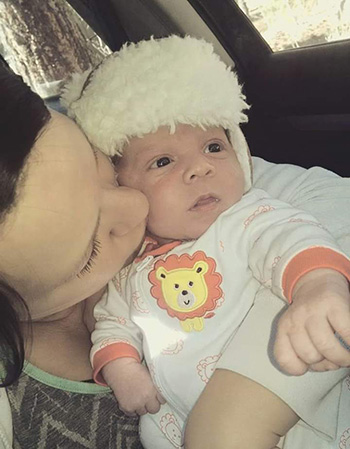
Dr. Gustafson said that when talking with patients, she often describes St. Luke’s McCall as a birthing center within a hospital. The team follows a family practice model of perinatal care, meaning family physicians provide the prenatal care, labor and delivery services and newborn care.
“We have a very natural-minded model to the birth process, but we have the hospital standards for emergency response,” Dr. Gustafson said.
According to the World Health Organization, C-section birth rates have steadily increased over the years. Reasons include the rise in obesity rates and social and cultural influences such as parents’ work responsibilities and the ability to plan when the child will be born. The WHO reports there is a lack of evidence showing benefits of a C-section delivery when it isn’t required.
In fiscal 2018, 8.7 percent of women delivered babies via C-section at St. Luke’s McCall. The national average for C-section deliveries is approximately 30 percent; the World Health Organization believes the rate realistically should be between 10 and 15 percent.
Harnessing technology to find improvement opportunities
What makes sense for a larger location like Boise isn’t always possible for smaller locations like McCall, where there were just 103 deliveries in fiscal 2018 (Boise had 4,043 deliveries during that same time period).
Because of those differences, the health system’s Critical Access Hospital Perinatal Collaborative team has looked for opportunities and is dedicated to improving safety across all obstetric critical access settings.
Opportunities for improvement are identified using data from myStLuke’s, the common electronic health records system. Information from each location includes the number of deliveries and type of delivery. That data recently revealed a dramatic improvement for St. Luke’s McCall: Between fiscal 2017 and fiscal 2018, St. Luke’s McCall’s C-section rate dropped from 24.5 percent to 8.7 percent.
Dr. Gustafson is the lead physician for the collaborative.
“The collaborative is helping to get alignment between all of these smaller hospitals so we aren’t an outlier,” Dr. Gustafson said.
Trial of labor after cesarean
Dr. Gustafson said part of the reason for the improvement is the hospital’s focus on a natural birth process. In addition, some patients are identified as candidates for a natural delivery in what is known as Trial of Labor after Cesarean (TOLAC). This procedure refers to a planned attempt at natural delivery for patients who have previously had a C-section delivery.
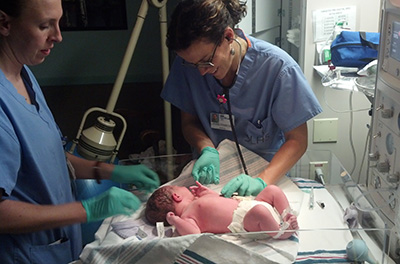
Women who are candidates for TOLAC must also meet other criteria to ensure it is safe for them to attempt a natural delivery. At St. Luke’s McCall, 100 percent of the TOLAC patients delivered successfully in fiscal 2018.
Amber Coyle was good candidate for TOLAC when she was pregnant with her son in summer 2016.
She planned to have her first baby naturally eight years earlier when living in Tacoma, Wash., but after 36 hours of labor, her medical team told her it was time for an emergency C-section. Her baby girl was in a dangerous position and the team was unsuccessful getting her to turn properly.
“That was really scary, because we both could have lost our lives,” Coyle said.
Coyle, who works in health information management at St. Luke’s McCall, was interested in trying for a natural birth again and worked closely with her doctor to prepare for her son’s delivery. Education material given to TOLAC patients include information about how to reduce fear and anxiety relating to the delivery process and what to expect during labor. Another room was waiting for her in case there was an unexpected problem requiring an emergency C-section.
That extra room was never needed, because Coyle had a successful natural delivery. After about six hours of labor, Coyle delivered baby Callan, who turned 2 in October.
“There was no danger with my second baby and I just felt safe,” Coyle said. “I just had total faith.”
About The Author
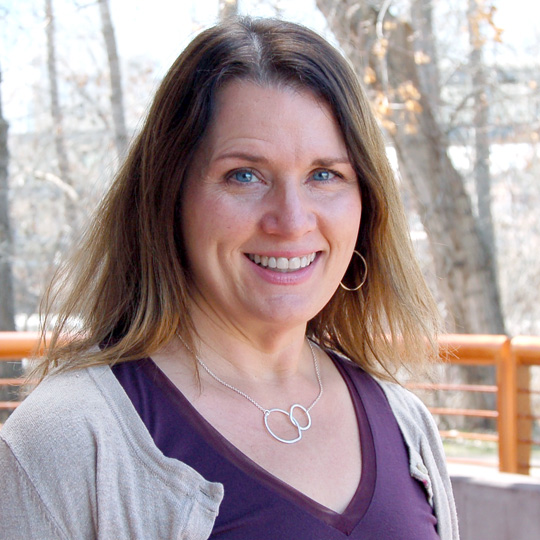
Chereen Langrill was formerly a communications coordinator for St. Luke’s Health System.


